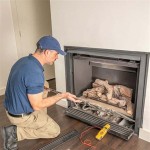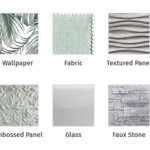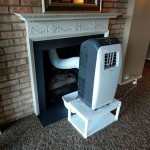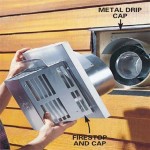Why Is There A Vent In My Fireplace? Understanding Fireplace Ventilation
Fireplaces, often focal points in homes, provide warmth and ambiance. However, their efficient and safe operation depends on more than just burning wood. A seemingly small detail, often overlooked, is the presence of one or more vents. These vents serve crucial purposes, contributing to the optimal functionality and safety of the fireplace system. Understanding the different types of vents and their specific roles is essential for homeowners to maintain and use their fireplaces responsibly.
The presence of a vent in a fireplace is not a design flaw; it is a deliberate engineering component. While the specific type and location of the vent might vary depending on the fireplace's design, fuel type (wood, gas, or electric), and installation standards, the overarching goal remains the same: to regulate air flow and pressure within the system. This regulation is vital for proper combustion, prevention of backdrafting, and overall system efficiency.
Ignoring or obstructing these vents can lead to a variety of problems, including inefficient burning, increased creosote buildup, smoke entering the living space, and, in severe cases, carbon monoxide poisoning. Therefore, proper identification and understanding of the fireplace vent system is a crucial aspect of responsible homeownership.
Combustion Air Vents: Facilitating Efficient Burning
One of the primary reasons for a vent in a fireplace is to provide combustion air. Traditional fireplaces require a significant amount of air to burn wood efficiently. This air, which contains oxygen, is essential for the combustion process. Without an adequate supply of combustion air, the fire will burn inefficiently, producing more smoke and less heat. In some cases, the fire might even struggle to stay lit.
Older homes often relied on infiltration air, meaning air that leaked in through cracks and gaps in the building envelope, to supply the fireplace with combustion air. However, modern homes are often built with tighter construction standards, reducing air leakage. This can create a situation where the fireplace starves for air, leading to poor performance and potential safety hazards.
To address this issue, many modern fireplaces are equipped with dedicated combustion air vents. These vents are typically located near the firebox or directly integrated into the fireplace structure. They draw air from the outside or from a less frequently used area of the house, ensuring a consistent supply of oxygen for the fire. These vents can significantly improve the efficiency of the fireplace, reduce smoke production, and minimize the risk of backdrafting. Some combustion air vents are manually adjustable, allowing homeowners to control the amount of air entering the firebox and fine-tune the burning process.
The location of the combustion air vent is crucial. It should be positioned in a way that avoids drawing air from areas where it could be contaminated with dust, debris, or other pollutants. Furthermore, the vent should be protected from the elements to prevent water or snow from entering the firebox.
Improperly sized or blocked combustion air vents can lead to a phenomenon known as negative pressure. This occurs when the fireplace draws more air than is available in the room, creating a vacuum effect. This can pull air, and potentially smoke and carbon monoxide, back down the chimney and into the living space. Maintaining a clear and properly sized combustion air vent is therefore essential for safe and efficient fireplace operation.
Damper Vents: Controlling Draft and Preventing Backdrafting
The damper vent, often integrated into the fireplace damper mechanism, plays a crucial role in controlling the draft and preventing backdrafting. The damper itself is a metal plate that can be opened or closed to regulate the flow of air through the chimney. When the fireplace is not in use, the damper should be closed to prevent warm air from escaping the house and cold air from entering. However, a completely sealed damper can create problems when the fireplace is in use.
A small vent or opening in the damper allows a small amount of air to flow through the chimney even when the damper is closed. This constant airflow helps to establish and maintain a proper draft, ensuring that smoke and combustion gases are effectively drawn up the chimney and out of the house. This small vent also helps to prevent backdrafting, a dangerous situation where smoke and carbon monoxide are pulled back down the chimney and into the living space.
Backdrafting can occur due to a variety of factors, including a cold chimney, strong winds, or negative pressure in the house. A cold chimney can create a down-draft, reversing the natural airflow and pushing smoke back into the room. Strong winds can also disrupt the draft and cause backdrafting. Negative pressure, as mentioned previously, can exacerbate the problem by pulling air down the chimney.
The damper vent helps to mitigate these risks by providing a small but continuous flow of air that warms the chimney and helps to establish a stable draft. This is particularly important in colder climates where the chimney is more likely to be cold and prone to down-drafts.
Modern damper designs may include adjustable vents or settings to further fine-tune the airflow. These adjustable features allow homeowners to customize the damper's performance based on the specific conditions and the type of fuel being burned. It's important to consult the fireplace manufacturer's instructions for proper damper vent settings.
It's crucial to inspect the damper and the damper vent regularly to ensure that they are functioning properly. The damper should be able to open and close smoothly, and the vent should be clear of any obstructions. A damaged or malfunctioning damper can compromise the efficiency and safety of the fireplace.
Gas Fireplace Vents: Safety and Combustion Management
Gas fireplaces, while offering convenience and cleaner burning compared to wood-burning fireplaces, also require specific venting systems to ensure safe and efficient operation. The vents in a gas fireplace serve several critical functions, including exhausting combustion gases, providing combustion air, and preventing the buildup of dangerous gases within the home.
Unlike wood-burning fireplaces, gas fireplaces often utilize direct-vent or vent-free technology. Direct-vent fireplaces draw combustion air from outside and exhaust combustion gases directly outside through a sealed vent system. This design eliminates the need for a traditional chimney and prevents combustion gases from entering the living space. The vent system typically consists of two concentric pipes, one for intake air and one for exhaust gases. This system ensures a consistent supply of fresh air and prevents the buildup of carbon monoxide and other harmful gases.
Vent-free gas fireplaces, as the name suggests, do not require a traditional vent or chimney. These fireplaces are designed to burn gas very efficiently, producing minimal amounts of carbon monoxide and other pollutants. However, they still require a small amount of ventilation to ensure proper air circulation and prevent the buildup of moisture and other gases. This ventilation is typically provided by strategically placed vents near the fireplace or in the room.
While vent-free gas fireplaces are designed to be safe, they are not suitable for all homes. It's crucial to follow the manufacturer's instructions and local building codes when installing and using vent-free gas fireplaces. Regular monitoring for carbon monoxide is also recommended, regardless of the type of gas fireplace used.
The vents in a gas fireplace should be inspected regularly for any signs of damage or blockage. Debris, such as leaves, bird nests, or snow, can obstruct the vents and compromise the fireplace's performance and safety. Damaged vents should be repaired or replaced immediately to prevent leaks and ensure proper ventilation.
Furthermore, it's essential to ensure that the gas fireplace is properly sized for the room. An undersized fireplace may not provide enough heat, while an oversized fireplace may produce excessive amounts of heat and pollutants. Consulting with a qualified HVAC professional is recommended to determine the appropriate size and type of gas fireplace for a particular home.
In summary, the vents in a fireplace, whether it's a wood-burning or gas-burning model, are essential components that contribute to its safe and efficient operation. Understanding the purpose of these vents and maintaining them properly is crucial for homeowners to enjoy the warmth and ambiance of their fireplaces without compromising their health and safety. Regular inspection, cleaning, and maintenance of the vents, along with adherence to manufacturer's instructions and local building codes, are essential for responsible fireplace ownership.
What Is This Vent Above My Firebox Hearth Com Forums Home
Gas Fireplace Venting Explained Heatilator

Vented Vs B Vent Direct Free Dixie S

What Is A Direct Vent Fireplace Fireplaces Learning Center
Remove Or Cover Up Old Heatilator Vents Hearth Com Forums Home

Benefits Of Direct Vent Fireplaces
Gas Fireplace Venting Explained Heat Glo

Any Fireplace Experts Out There On Houzz Need Help With Ugly Vents
Gas Fireplace Venting Explained Heat Glo

Direct Vent Vs Natural Www Mygasfireplacerepair Com
Related Posts








